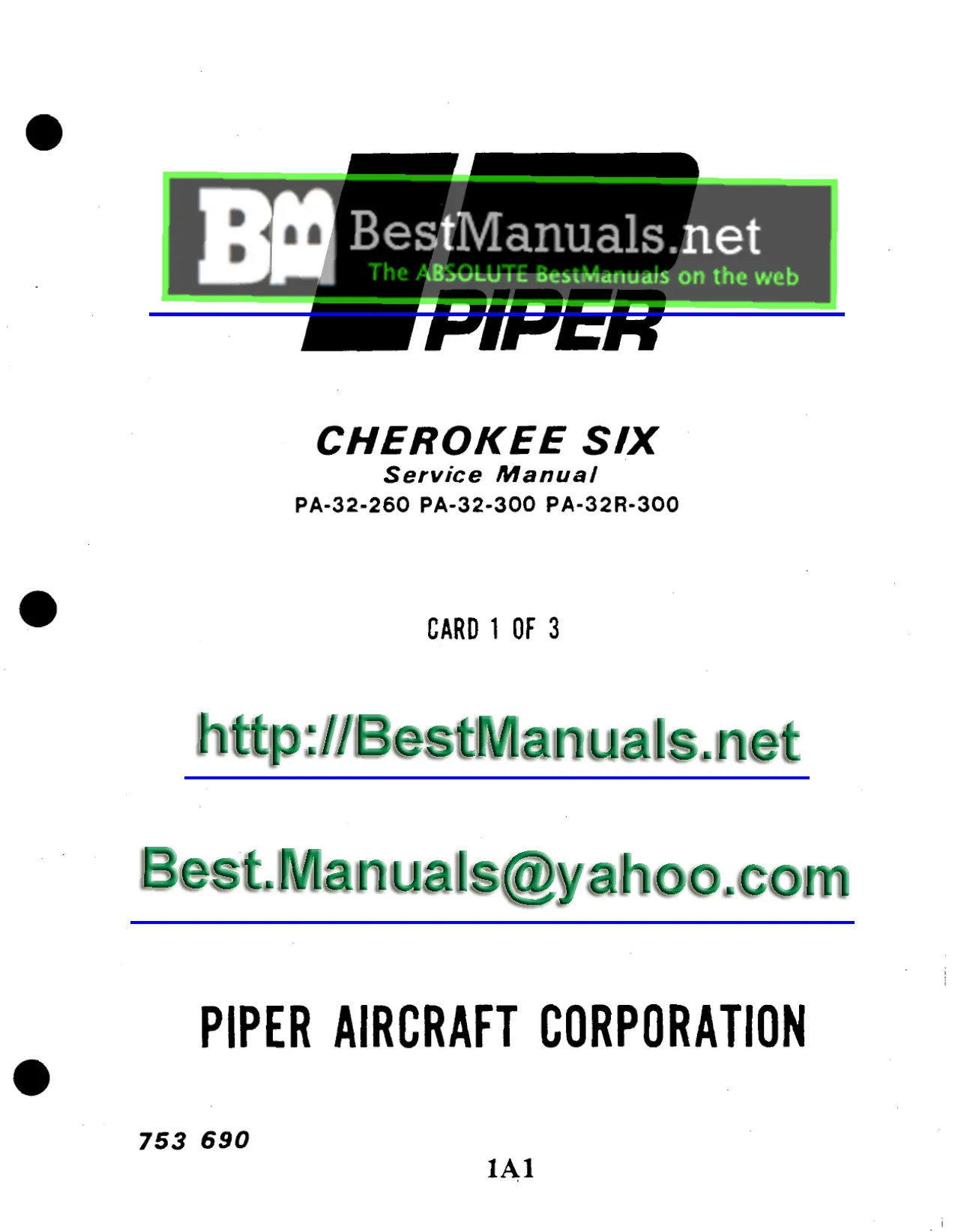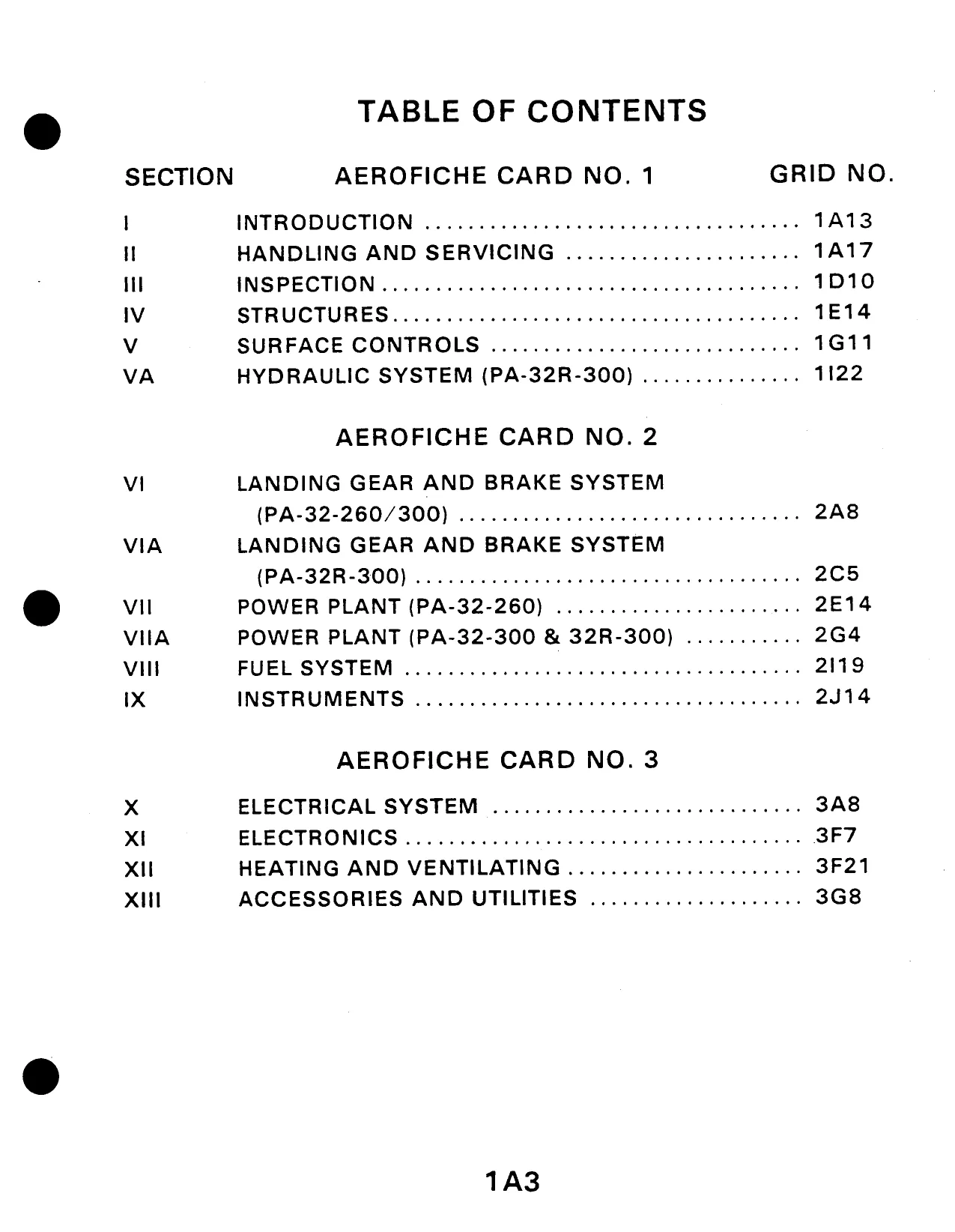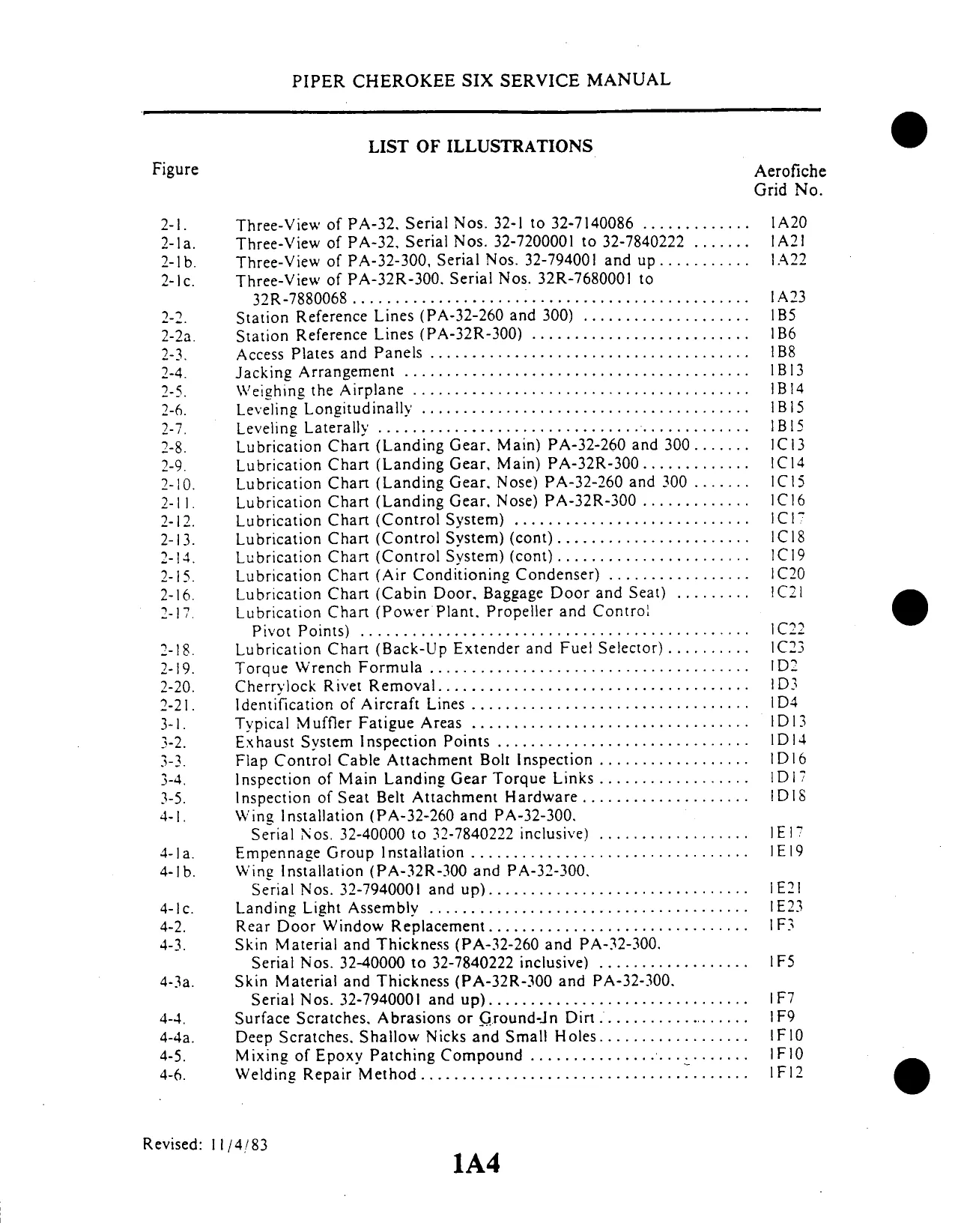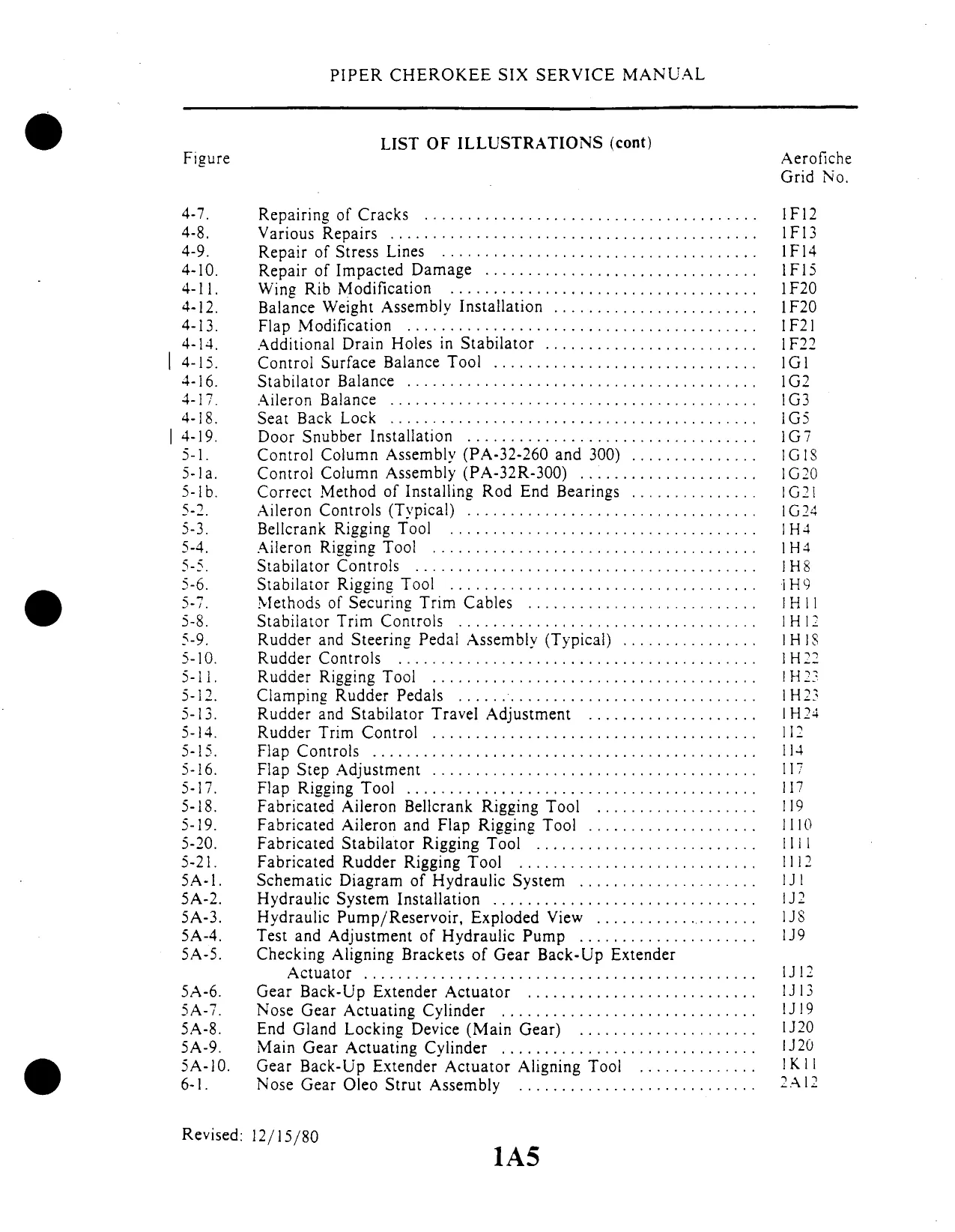Piper Cherokee Six PA-32-260, PA-32-300, PA-32R-300 aircraft service parts POH manual
Product Gallery

Sample pages from the Piper Cherokee Six PA-32-260, PA-32-300, PA-32R-300 aircraft service parts POH manual manual




Purchase Information
Piper Cherokee Six PA-32-260, PA-32-300, PA-32R-300 aircraft service parts POH manual - Technical Specifications
- File Size:
- 58.69 MB
- File Type:
- ZIP
- Language:
- English
- Printable:
- Yes
- Estimated Download Time:
- 1.2 Minutes
- Delivery Format:
- Digital (PDF) - Instant Access
- Category:
- Aircraft
- Brand:
- Piper
Piper Models and Parts Covered in this Aircraft Manual
Piper Aircraft, Inc.
- PA-32-260
- PA-32-300
- PA-32R-300
Piper PA-23 Cherokee Six PA-32-260 PA-32-300 PA-32R-300 Aircraft Maintenance Library
- Parts manual
- Service manual
- Pilots Operating Handbook
- Cherokee Service Manual 753-690 (PA-32-260, PA-32-300, PA-32R-300)
- Cherokee Parts Catalog 753-689 (PA- 32-260, PA-32-300, PA-32R-300)
- Cherokee Six B Owner's Handbook
Complete Manual Information
Table of Contents
SECTION 1 - INTRODUCTION
- Identification
- Description
- Models Covered
SECTION 2 - HANDLING, SERVICING, AND MAINTENANCE
- Ground Handling
- Servicing
- Scheduled Maintenance
- Unscheduled Maintenance
SECTION 3 - AIRFRAME
- Fuselage
- Wings
- Empennage
SECTION 4 - LANDING GEAR
- Main Gear
- Nose/Tail Gear
- Wheels and Brakes
SECTION 5 - POWERPLANT
- Engine
- Propeller
- Engine Mounts
SECTION 6 - FUEL SYSTEM
- Fuel Tanks
- Fuel Lines
- Fuel Management
SECTION 7 - PROPULSION
- Engine Operating Procedures
- Throttle and Mixture Controls
- Power Settings
SECTION 8 - ELECTRICAL SYSTEM
- Batteries
- Alternator/Generator
- Electrical Circuits
SECTION 9 - AVIONICS
- Communication Equipment
- Navigation Equipment
- Avionics Care and Maintenance
SECTION 10 - FLIGHT CONTROLS
- Control Surfaces
- Rigging
- System Checks
SECTION 11 - INSTRUMENTS AND INDICATORS
- Flight Instruments
- Engine Instruments
- System Indicators
SECTION 12 - ENVIRONMENTAL SYSTEM
- Heating
- Ventilation
- Air Conditioning (If applicable)
SECTION 13 - WEIGHT AND BALANCE
- Loading
- Weight Shift Calculations
- Equipment List
SECTION 14 - PERFORMANCE
- Takeoff and Climb
- Cruise
- Landing Performance
SECTION 15 - OWNERS HANDBOOK (POH)
- Operating Limitations
- Operating Procedures
- Emergency Procedures
APPENDICES
- A: Supplements
- B: Reference Information
INDEX
The Piper Cherokee Six PA-32-260, PA-32-300, PA-32R-300 aircraft service parts POH manual is a valuable resource for mechanics, technicians, and owners. It contains detailed information on the aircraft's systems, maintenance procedures, performance data, and emergency protocols, making it an essential tool for anyone responsible for maintaining or operating these aircraft.
Download Instructions for Piper Aircraft Manual
Frequently Asked Questions - Piper Aircraft Manual
What does this Piper manual cover?
This comprehensive service manual covers detailed repair procedures, maintenance schedules, troubleshooting guides, and technical specifications for Piper Cherokee Six PA-32-260, PA-32-300, PA-32R-300 aircraft service parts POH manual. It includes information for the following models: **Piper Aircraft, Inc.** - PA-32-260 - PA-32-300 - PA-32R-300 *Piper PA-23 Cherokee Six PA-32-260 PA-32-300 PA-32R-300 Aircraft Maintenance Library* - Parts manual - Service manual - Pilots Operating Handbook - Cherokee Service Manual 753-690 (PA-32-260, PA-32-300, PA-32R-300) - Cherokee Parts Catalog 753-689 (PA- 32-260, PA-32-300, PA-32R-300) - Cherokee Six B Owner's Handbook .
Is this manual suitable for beginners?
Yes, this Piper manual is designed for both professional technicians and DIY enthusiasts. It includes step-by-step procedures with clear illustrations and safety guidelines for Aircraft maintenance and repair.
What file format will I receive?
You will receive this manual as a ZIP file (58.69 MB), which is compatible with all devices. The manual is fully searchable and printable for your convenience.
How quickly can I access the manual after purchase?
You'll receive instant access to your Piper Aircraft manual immediately after payment completion. The download link is valid for 3 days, with lifetime re-download guarantee.
Can I print specific sections of the manual?
Absolutely! This digital manual allows you to print any section you need, from individual pages to complete chapters, making it perfect for workshop use.
Customer Reviews and Feedback
Read what our customers say about this Piper Aircraft manual and share your own experience.
Add Comment
This policy contains information about your privacy. By posting, you are declaring that you understand this policy:
- Your name, rating, website address, town, country, state and comment will be publicly displayed if entered.
- Aside from the data entered into these form fields, other stored data about your comment will include:
- Your IP address (not displayed)
- The time/date of your submission (displayed)
- Your email address will not be shared. It is collected for only two reasons:
- Administrative purposes, should a need to contact you arise.
- To inform you of new comments, should you subscribe to receive notifications.
- A cookie may be set on your computer. This is used to remember your inputs. It will expire by itself.
This policy is subject to change at any time and without notice.
These terms and conditions contain rules about posting comments. By submitting a comment, you are declaring that you agree with these rules:
- Although the administrator will attempt to moderate comments, it is impossible for every comment to have been moderated at any given time.
- You acknowledge that all comments express the views and opinions of the original author and not those of the administrator.
- You agree not to post any material which is knowingly false, obscene, hateful, threatening, harassing or invasive of a person's privacy.
- The administrator has the right to edit, move or remove any comment for any reason and without notice.
Failure to comply with these rules may result in being banned from submitting further comments.
These terms and conditions are subject to change at any time and without notice.
Comments (1)